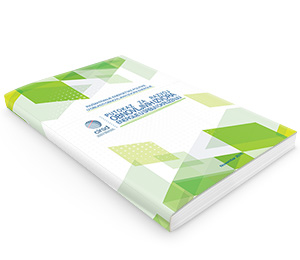ABSTRACT
The energy policy aimed at securing a future for sustainable energy should be based on three key themes: improving fossil fuel technologies to have a lower environmental and social impact; applying renewable technologies on a wider scale; and introducing energy efficiency measures in the fields of energy conservation, distribution and consumption. Authors of this paper strive to point that renewable energy will continue to play important role in the transition towards a competitive, secure and sustainable energy systems in the future, especially having in mind that the global electricity demand is constantly increasing, as is its share in overall energy usage.
 The challenges of the energy strategy, driven by climate changes and energy security, are reflected in creating an energy market with competitive prices, ensuring security of supply, reducing CO2 emissions and saving energy. In this paper, key policy themes related to renewable energy utilization in the power sector are analyzed; as well as obstacles to their deployment and the main challenges facing decision makers. Negative impacts of electricity production from various sources on environment, climate and health are discussed, along with the support mechanisms and schemes, which are still necessary to make most renewable energy technologies competitive. The variability of electricity production from intermittent sources (wind, solar) has been also addressed, as well as the renewable energy cost and benefit analysis and the model of the Levelized Cost of Electricity, which enables a fair comparison of different electricity generating technologies.
The challenges of the energy strategy, driven by climate changes and energy security, are reflected in creating an energy market with competitive prices, ensuring security of supply, reducing CO2 emissions and saving energy. In this paper, key policy themes related to renewable energy utilization in the power sector are analyzed; as well as obstacles to their deployment and the main challenges facing decision makers. Negative impacts of electricity production from various sources on environment, climate and health are discussed, along with the support mechanisms and schemes, which are still necessary to make most renewable energy technologies competitive. The variability of electricity production from intermittent sources (wind, solar) has been also addressed, as well as the renewable energy cost and benefit analysis and the model of the Levelized Cost of Electricity, which enables a fair comparison of different electricity generating technologies.
The common message throughout this paper is that the utilization of renewable energy sources in Serbia and the region is far below the level projected and committed to by these countries as contracting parties in the Energy Community Secretariat. It is also clear that the lack of projects is not due to a lack of interest among investors and independent power producers (IPPs). On the contrary – the interest is there and money has started flowing into the sector, but a result is still lacking. This is due solely to a number of different barriers – economic, political and social – which hamper construction of most renewable energy projects, especially the larger example. In that respect, this paper suggests the guidelines on the key policy issues, aimed to enable wider utilization of renewable energy sources.
Finally, it is clear that the issue of renewable energy utilization, associated with climate change mitigation and the promotion of green economy, is too important to be left solely to experts. It requires consensus among the widest group of stakeholders, because our decisions about climate and renewable energy policy represent our existential choices about the way of life, as well as about the prospects for the future generation.








